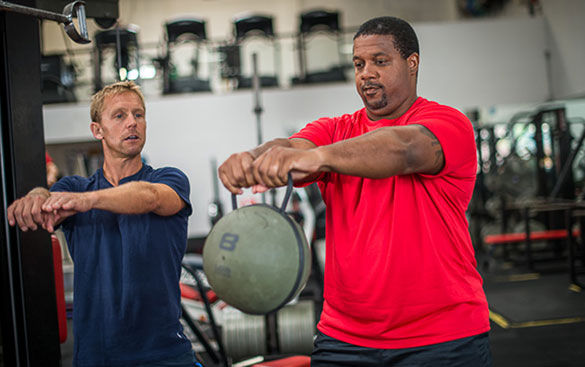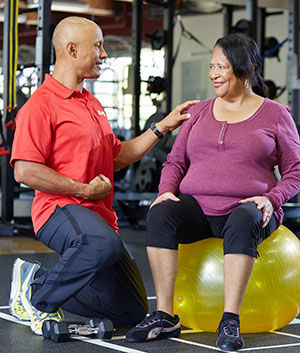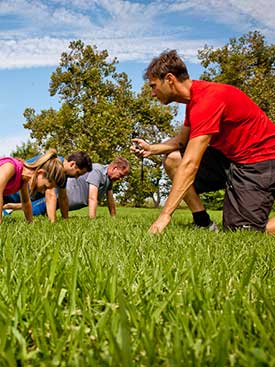
Every health and fitness professional and every entrepreneur is striving to create client loyalty and brand recognition, whether locally or on a global scale. The ultimate question is how to accomplish these goals in whatever niche you target. When talking to experts about what drives client loyalty, “community” is typically the first response. Here are four proven approaches tor creating a true community that can help drive your success.
1. Encourage Social Support

A strong sense of community is a natural extension of small-group training and group fitness classes, where participants simultaneously challenge and support one another. A creative way to enhance this type of environment is through the use of social media. You can encourage clients to form Facebook groups where they record their activity and progress by having them count steps, record attendance at a class or check in to report on what physical activity they completed outside the facility. A few “likes” and words of encouragement can go a long way toward building the social support that is so vital to long-term success.
This sense of community doesn’t have to be based on everyone in a particular class or small-group session being at the same ability level, says Jessica Matthews, M.S., ACE senior advisor for health and fitness education and assistant professor of exercise science at Miramar College. Instead, it should be based on the common goal that each individual challenges themselves personally to improve in some small way during each and every workout. “Social support is one of the greatest predictors of long-term adherence to physical activity,” Matthews reminds us, which is why the formation of a tight-knit community is so integral to a facility’s effectiveness.
Jonathan Ross, ACE Certified Personal Trainer and owner of Aion Fitness, echoes this sentiment. “The social component is massive,” says Ross. “The emotional bonds from fostering a connection between individuals is a powerful glue. Everyone is, to a certain extent, invested in everyone else’s success. The encouragement and moral support both during a single workout session and more broadly over time are significant factors in exercise adherence and facility loyalty.”
2. Foster Competition
Friendly competition can be a powerful motivator for many people, and this can be accomplished in the facility or through social media. You can have clients record their steps each day as calculated through the use of a pedometer or phone app and offer prizes for those clients who record the most steps in a month. This allows newcomers who are walking on the treadmill to compete with seasoned vets who may be trail running on the weekends. Asheville Family Fitness in Asheville, N.C., for example, has its members form teams and challenges them to collectively travel the distance of the Appalachian Trail over the course of the summer. Progress is charted on a map of the Trail on the wall of the gym. Prizes for this type of group challenge can include free gear, discounts on services or a free month added onto a membership.
3. Encourage Client Autonomy
Self-reliance is an often-overlooked factor in an individual’s long-term success. Helping clients develop the autonomy to overcome obstacles or lapses in activity is essential. This can be accomplished by setting goals together with each participant, ranging from increases in workload to simply attending a certain number of classes each week.
Pete McCall, M.S., C.S.C.S., ACE Certified Personal Trainer, believes that giving participants the ability to track improvements from workout to the next can help a club set itself apart from its competition. “People like to be challenged while also being able to monitor their success,” says McCall. “People want to be able to not only see, but also quantify, their progress.”
Having clients log their own progress—and setbacks—lets them know that they are in charge of their own success. You can take this one step further by allowing participants to share and compare their logs with fellow members of your facility.
4. Drive Brand Loyalty

Another great way to develop brand awareness and loyalty is by engaging with the surrounding community. You can offer free low-intensity classes or drop-in days where members of the community can learn about your training philosophy, meet your trainers and get a taste of what sets you apart from the local competition. It’s also a good idea to hold classes outdoors on occasion in a public park, and don’t forget to have all participants wear a T-shirt with your gym’s name and logo. Be sure to linger for a few minutes after class to answer any questions and give out business cards.
Finally, you can form strategic partnerships with local companies that share your mindset. For example, a health food store or restaurant may be willing to provide discounts to your members in exchange for allowing them to use your space for demonstrations or to give out samples of their foods.
Conclusion
What drives both progress and enjoyment among your clients will be the successes they achieve, the combination of social support and personal autonomy, and a sense of friendly competition. These are things that every fitness business owner should be striving to create if they are hoping for long-term success.





 by
by 




